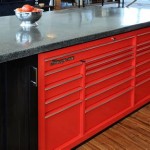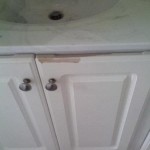Length of Kitchen Cabinet Handles: A Comprehensive Guide
The selection of cabinet hardware is a crucial aspect of kitchen design. While aesthetics play a significant role, functionality and ergonomics are equally important. Among the various hardware options, cabinet handles are a primary consideration. The length of kitchen cabinet handles directly impacts ease of use and influences the overall visual appeal of the cabinetry. This article provides a comprehensive guide to understanding the different factors involved in choosing the appropriate handle length for kitchen cabinets.
Cabinet handles serve as the primary means of opening and closing cabinet doors and drawers. The length of the handle affects the amount of leverage provided, thus impacting the force required to operate the cabinet. A handle that is too short may require more effort and could potentially lead to discomfort or strain over time. Conversely, a handle that is excessively long may appear disproportionate and hinder other kitchen activities. Therefore, selecting the right handle length is essential for optimizing both functionality and aesthetics.
The perceived aesthetic impact of handle length is closely tied to visual balance and proportion. Handles that are appropriately sized will complement the overall design scheme, enhancing the cabinets' features. In contrast, handles that are either too small or too large can disrupt the visual harmony and detract from the overall aesthetic appeal of the kitchen.
Factors Influencing Kitchen Cabinet Handle Length
Several factors should be considered when determining the appropriate length for kitchen cabinet handles. These factors include the size and style of the cabinet itself, the overall design aesthetic of the kitchen, and personal preferences. A careful evaluation of these factors will help ensure that the selected handles are both functional and visually appealing.
Cabinet Size and Proportion: The dimensions of the cabinet doors and drawers are primary considerations when selecting handle length. A general guideline suggests that the handle length should be approximately one-third the width of the drawer or door. For smaller drawers, a shorter handle or knob may suffice. For larger drawers and wider cabinet doors, a longer handle will provide better leverage and a more balanced appearance. For example, a 12-inch drawer might accommodate a 4-inch handle, while a 36-inch drawer might require a 12-inch handle or two smaller handles.
Kitchen Design Style: The overall design style of the kitchen influences handle selection. In modern and minimalist kitchens, longer, sleek handles are often favored to accentuate the clean lines and uncluttered appearance. Conversely, in traditional or farmhouse-style kitchens, shorter, more ornate handles or knobs may be more appropriate. The handle’s finish and material should complement the other design elements within the kitchen, such as the cabinet color, countertop material, and faucet finish. A cohesive design approach will enhance the overall aesthetic appeal.
User Preferences and Ergonomics: Personal preference plays a significant role in handle selection. Some individuals may prefer longer handles for their aesthetic appeal, while others may prioritize shorter handles for ease of use. Ergonomic considerations are equally important. The handle should be comfortable to grip and operate, without requiring excessive force or causing strain on the hands or wrists. Individuals with arthritis or other mobility limitations may benefit from longer handles that provide better leverage. It is recommend to test different handle lengths to determine the most comfortable and functional option.
Common Kitchen Cabinet Handle Lengths
Various handle lengths are available on the market, catering to different cabinet sizes and design preferences. Standard handle lengths typically range from 3 inches to over 12 inches. Understanding these common lengths can aid in the selection process. The "center-to-center" measurement is a crucial specification to understand, as it designates the distance between the screw holes that attach the handle to the cabinet.
3-Inch Handles (Center-to-Center): Handles with a 3-inch center-to-center measurement are generally best suited for smaller drawers and cabinet doors. They provide a minimalist look and are often used in contemporary kitchens. These handles are a good fit for drawers less than 9 inches wide.
4-Inch Handles (Center-to-Center): Handles with a 4-inch center-to-center measurement are a versatile option that can be used on a variety of cabinet sizes. They are suitable for drawers and doors ranging from 9 to 18 inches in width, offering a comfortable grip and balanced appearance.
5-Inch Handles (Center-to-Center): Handles with a 5-inch center-to-center measurement are suitable for drawers and doors ranging from 18 to 24 inches in width. These handles offer a more substantial grip and a bolder visual statement. They are often used in kitchens with a transitional or contemporary design style. In some cases a 96mm handle (approx. 3.75 inches) will be sold as 4-inch.
6-Inch Handles (Center-to-Center) and Longer: Handles with a 6-inch center-to-center measurement or longer are typically reserved for larger drawers and wider cabinet doors. They provide maximum leverage and a strong visual impact. These handles are often used in modern or industrial-style kitchens to complement the bold aesthetic. For drawers wider than 24 inches, these lengths are often the most appropriate.
Using Two Handles: For very wide drawers (over 36 inches), using two smaller handles rather than one long handle can be both aesthetically pleasing and functionally beneficial. Positioning two handles evenly spaced across the drawer front distributes the pulling force more evenly, reducing stress on the drawer slides and making the drawer easier to open. The total length of the two handles combined, plus the spacing between them, should visually balance with the drawer's width.
Installation Considerations and Techniques
Proper installation is crucial for ensuring that cabinet handles function correctly and maintain their aesthetic appeal over time. Accurate measurements and the use of appropriate tools are essential for achieving a professional-looking result. Careful attention to detail during the installation process will prevent damage to the cabinets and ensure that the handles are securely attached.
Measuring and Marking: Accurately measuring and marking the locations for the screw holes is the first step in the installation process. A template or measuring tape should be used to ensure that the holes are aligned correctly. The center point of the drawer or door should be identified, and the handle should be positioned accordingly. A pencil or marking tool should be used to mark the locations for the screw holes. Before drilling, double-check the measurements to prevent errors.
Drilling Pilot Holes: Drilling pilot holes is essential for preventing the wood from splitting or cracking during the installation process. A drill bit that is slightly smaller than the diameter of the screws should be used. Slowly and carefully drill the pilot holes at the marked locations. Ensure that the drill bit is perpendicular to the surface of the cabinet door or drawer to prevent angled holes.
Attaching the Handles: Once the pilot holes have been drilled, the handles can be attached using the provided screws. Use a screwdriver to tighten the screws, being careful not to overtighten them. Overtightening can damage the handles or strip the screw holes. Ensure that the handles are securely attached and do not wobble. If necessary, use shims or washers to achieve a flush and secure fit. After installation, inspect the handles to ensure that they are aligned correctly and function smoothly.
Material and Finish Options
The material and finish of kitchen cabinet handles contribute significantly to the overall aesthetic appeal of the kitchen. A wide variety of materials and finishes are available, each offering a unique look and feel. Selecting materials and finishes that complement the existing design elements will enhance the overall cohesiveness of the kitchen.
Common Handle Materials: Common materials used for kitchen cabinet handles include stainless steel, brass, bronze, nickel, and aluminum. Stainless steel is a popular choice due to its durability, corrosion resistance, and sleek appearance. Brass and bronze offer a more traditional and warm aesthetic. Nickel provides a similar look to stainless steel but with a slightly warmer tone. Aluminum is a lightweight and affordable option that is often used in modern kitchens. Consider the properties of the material and its compatibility with the kitchen environment when making a selection.
Finish Options: Various finish options are available for kitchen cabinet handles, including polished, brushed, matte, and antique finishes. Polished finishes offer a shiny and reflective surface, while brushed finishes have a more subtle and textured appearance. Matte finishes provide a non-reflective and understated look. Antique finishes are designed to mimic the appearance of aged or vintage hardware. Select a finish that complements the other design elements in the kitchen and reflects your personal style.
Coordinating with Other Hardware: Coordinating the handle material and finish with other hardware in the kitchen, such as faucets, light fixtures, and appliance pulls, will create a cohesive and harmonious design. Consistency in material and finish will enhance the overall aesthetic appeal and contribute to a polished and professional look.
Maintenance and Care
Proper maintenance and care are essential for preserving the appearance and functionality of kitchen cabinet handles. Regular cleaning and occasional maintenance will prevent the buildup of dirt and grime and ensure that the handles continue to function smoothly. Following these guidelines will extend the lifespan of the handles and maintain their aesthetic appeal.
Regular Cleaning: Regularly clean kitchen cabinet handles with a soft cloth and mild soap and water. Avoid using abrasive cleaners or scouring pads, as these can damage the finish. Wipe the handles dry after cleaning to prevent water spots. Pay particular attention to areas around the handle that come into contact with hands, as these areas are more prone to accumulating dirt and grime.
Addressing Loose Handles: Periodically check the tightness of the screws that attach the handles to the cabinets. If the handles become loose, tighten the screws as needed. If the screw holes have become stripped, consider using longer screws or wood glue to provide a more secure attachment. Address loose handles promptly to prevent further damage to the cabinets or handles.
Protecting the Finish: Protect the finish of the handles by avoiding contact with harsh chemicals or abrasive materials. Use placemats or coasters to prevent spills and stains from damaging the handles. If the handles are located near a stovetop or oven, consider using a heat shield to prevent heat damage. Taking these precautions will help extend the lifespan of the handles and maintain their appearance.

The Right Length Cabinet Pulls For Doors And Drawers Porch Daydreamer

The Right Length Cabinet Pulls For Doors And Drawers Kitchen Hardware

The Right Length Cabinet Pulls For Doors And Drawers Kitchen Hardware Drawer

Comprehensive Guide To Cabinet Hardware Size Placement Handles More

Black Cabinet Handles Aluminum Alloy Kitchen Cupboard Pulls Drawer Knobs Furniture Handle Bedroom Door Hardware Fruugo De

The Right Length Cabinet Pulls For Doors And Drawers Kitchen Hardware

Hot Ing Kitchen Cupboard Knobs Whole Modern Zinc Alloy Cabinet Drawer Handles Bedroom Decorative Handle China Pull Made In Com

How To Measure Kitchen Cabinet Handles The Handmade Handle Company

1 Pack Black Cabinet Knobs 2 Inch Length Single Hole T Bar For Kitchen Door And Dresser Drawer Com

2 Pack 3 Hole Centers Cabinet Handles Pulls Stainless Steel Drawer 5 Length Kitchen Hardware For Cabinets And Drawers 76mm Shein
Related Posts








